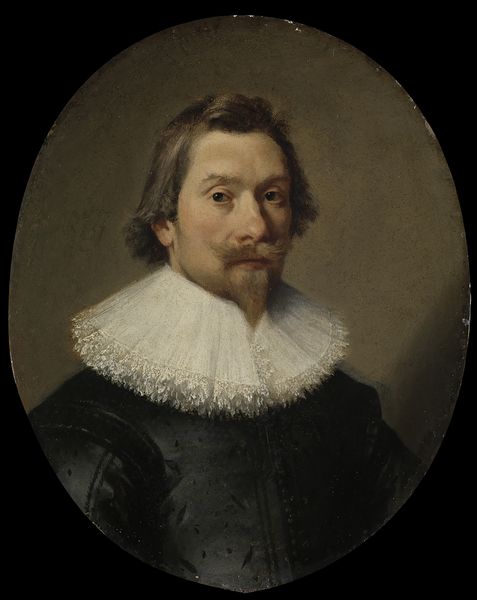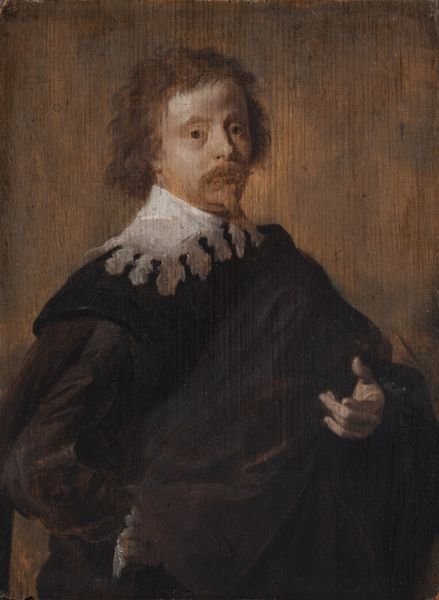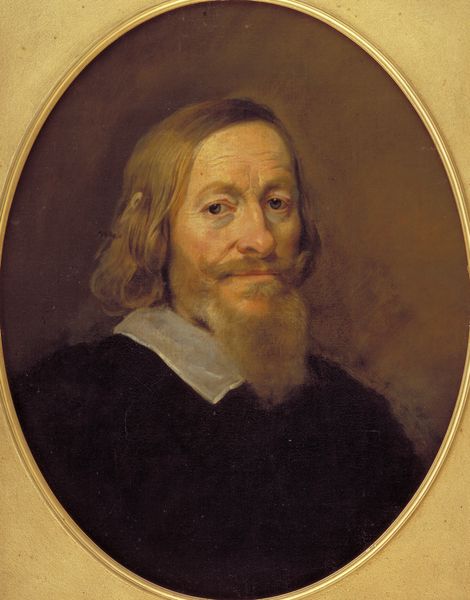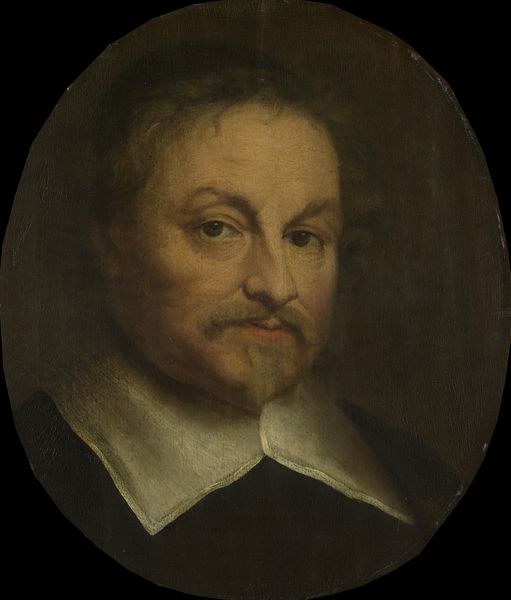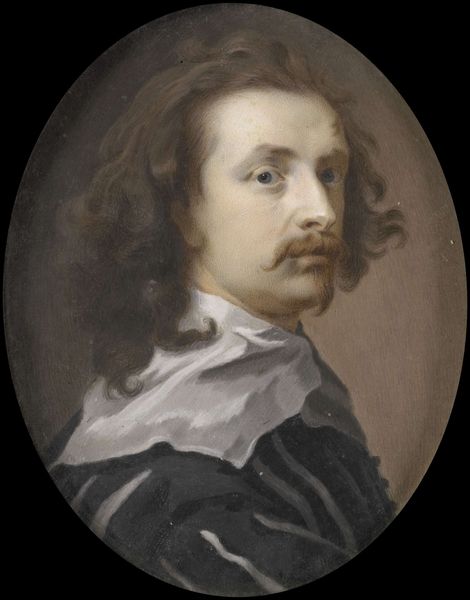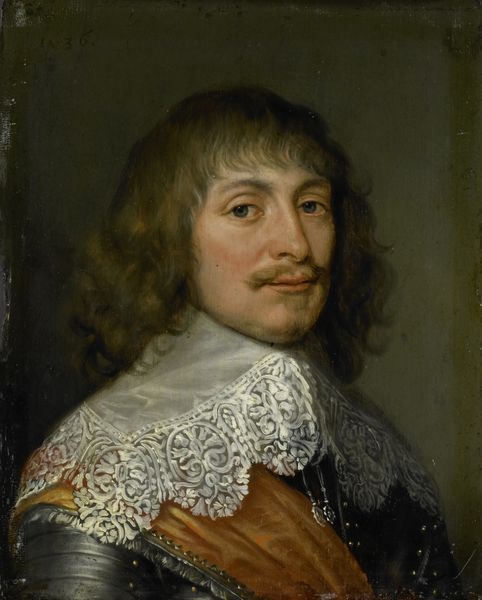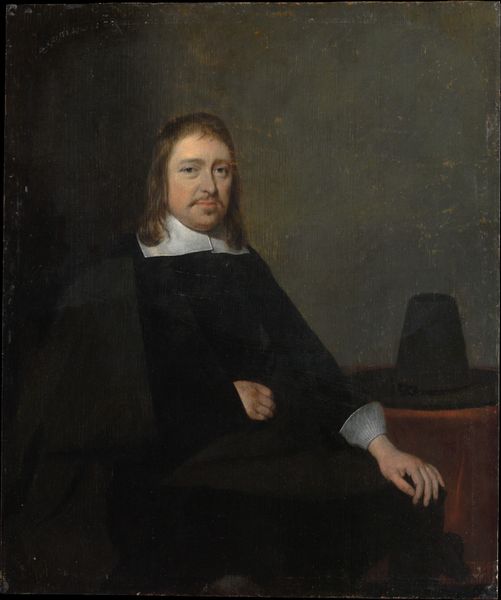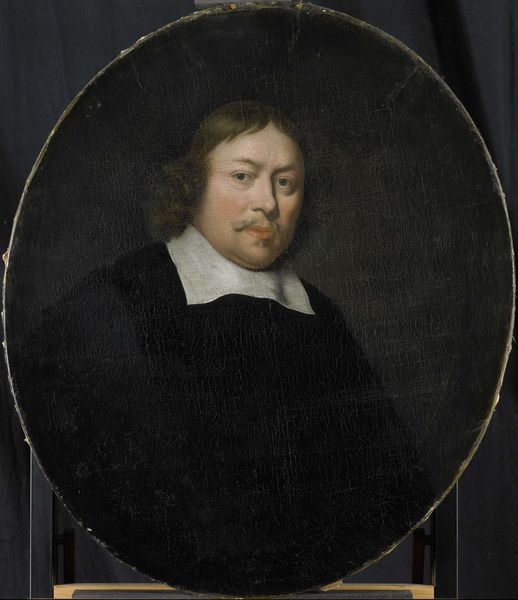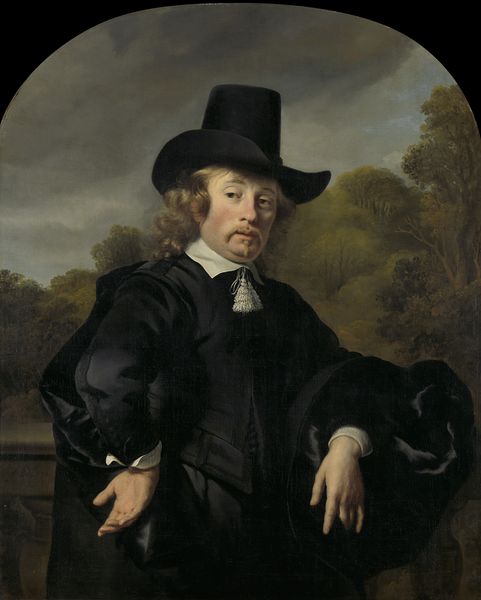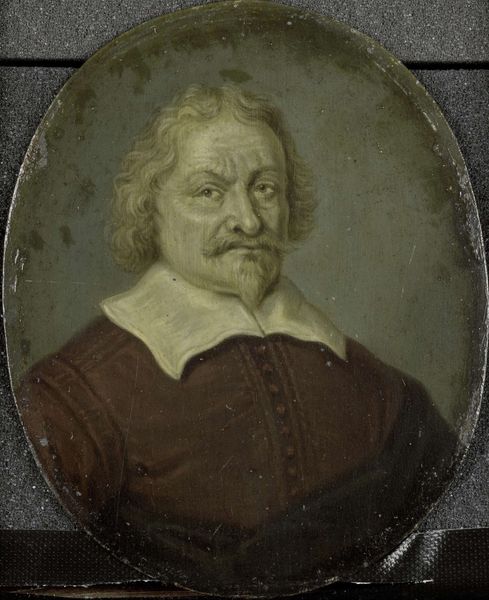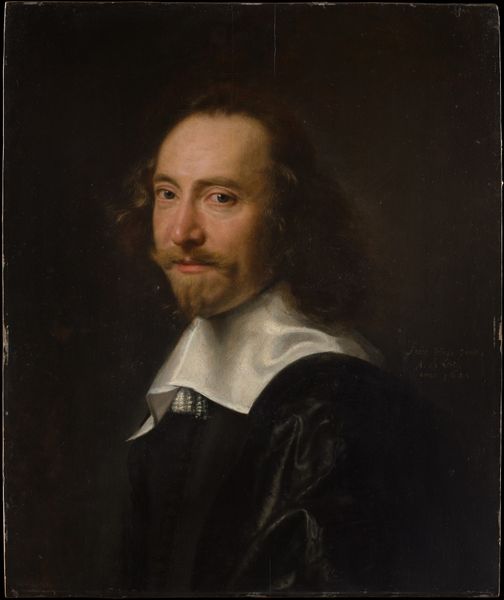
Godard van Reede (1588-1648), Lord of Nederhorst. Delegate of the Province of Utrecht at the Peace Conference at Münster (1646-48) 1646 - 1648
0:00
0:00
gerardteriiborch
Rijksmuseum
painting, oil-paint
#
portrait
#
baroque
#
dutch-golden-age
#
painting
#
oil-paint
#
genre-painting
#
history-painting
Dimensions: height 14.5 cm, width 11 cm, height 21.3 cm, width 17.7 cm, depth 3.7 cm
Copyright: Rijks Museum: Open Domain
Curator: Here we have Gerard ter Borch’s portrait of Godard van Reede, painted between 1646 and 1648, now hanging in the Rijksmuseum. Van Reede was Lord of Nederhorst and a delegate from Utrecht at the Peace Conference of Münster. Editor: Immediately, I’m struck by the gravity of the gaze and the overwhelming darkness surrounding the subject. There’s an intensity, but also a vulnerability that peeks through. It’s as though the weight of his office is etched onto his face. Curator: The piece certainly exists within a potent historical context. This portrait commemorates a man central to the Peace of Münster, a treaty that shaped the Dutch Republic and its relationship to Europe. It marks a key turning point in Dutch history, signaling a shift in power dynamics and international relations. Editor: Absolutely. Notice the deliberate choice of clothing and adornments. The lace collar, the ornate broach--they speak of status, certainly. But it’s the symbolic weight of the broach, the implied authority, that truly captures my attention. Dutch art loves hiding symbols. The peace of Munster marked the recognition of the Republic of the United Netherlands. That brooch might allude to such a victory or the hope for an enduring era. Curator: Ter Borch's masterful use of light and shadow emphasizes Van Reede’s expression, highlighting his role within a historical movement toward nation-state recognition. He looks directly at us, his audience, asking us to reflect upon the burdens and successes of diplomacy during his era. This painting is very much a symbol of Dutch ascendancy. Editor: And beyond the political dimensions, it invites us to contemplate what ‘peace’ truly signified, especially considering the shifting geopolitical landscapes of the time. I wonder about those who were not present in the halls of power, what their experiences of peace might have been. What stories are not being told? Curator: Exactly. Ter Borch's artwork not only offers insight into a historical figure but encourages us to confront questions of power, representation, and who benefits from "peace" on both a national and interpersonal level. Editor: For me, studying this piece means confronting layers of symbolic communication and the enduring human search for balance within both internal life and world affairs. Curator: And through studying its context and impact, hopefully, visitors gain not only knowledge about history, but inspiration for more relevant futures.
Comments
No comments
Be the first to comment and join the conversation on the ultimate creative platform.
